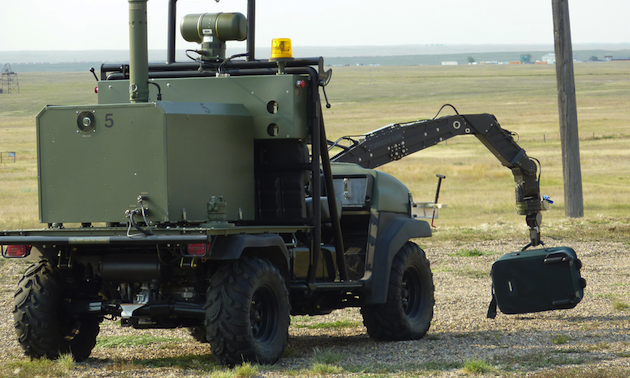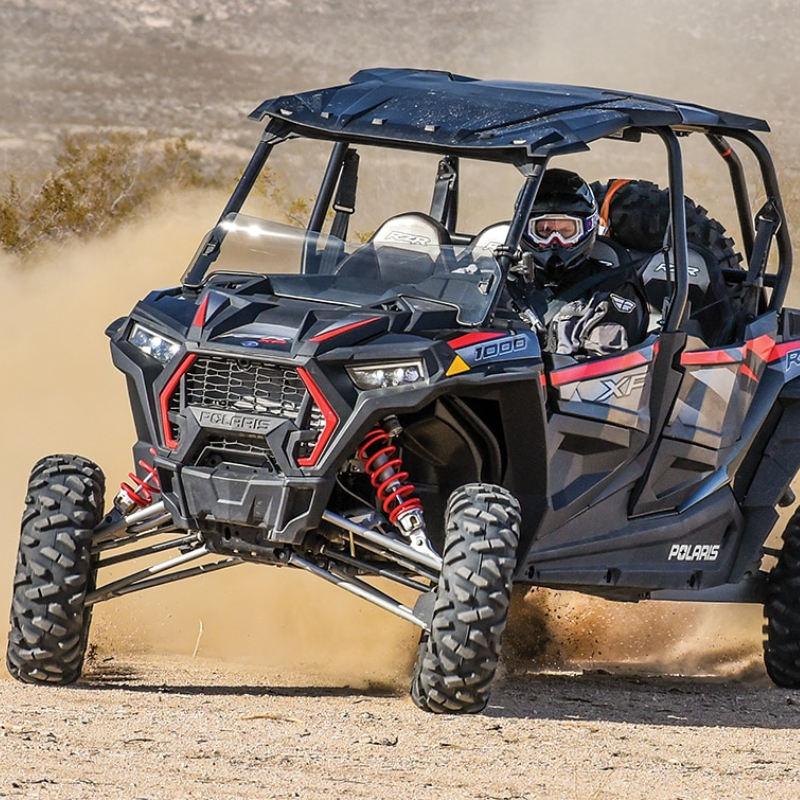When Canada’s military looked for something that could help them face increasing threats posed by the ready availability of nuclear, biological and chemical agents, the Department of Research and Development Canada (DRDC) had just the thing: MATS.
MATS is the acronym for the Multi-Agent Tactical Sentry vehicle built by DRDC using a Kawasakai 3010 diesel utility vehicle. Adding a few specific modifications to this relatively ordinary mule, the DRDC created an extraordinary 4x4 that’s become an invaluable tool for Canada’s military.
Created by team members at DRDC who have between them over 120 years of experience creating robotic systems, the MATS can operate completely unmanned, operating remotely from a command station set up as near or as far as operations require.
So what can MATS do? According to DRDC team member Steven Penzes, the feats MATS can perform with its host of integrated systems and suite of sensors are virtually unlimited.
“It can survey and it can investigate with the four cameras it has mounted at various points across the unit,” said Penzes. “It can also have a meteorological station installed and give real-time local weather conditions so that soldiers can modify their behaviour based on threats that are a function of weather. It can detect chemical, biological, radiological and nuclear threats with the sensor suites that are housed on the back and you can switch it from an unmanned vehicle to a manned vehicle with just one flick of a switch.”
With the additional functions of a robotic arm that DRDC also developed and a camera mounted on its “wrist,” the MATS also has the ability to offer vantage points that could otherwise put soldiers at risk. Fully extended, this robotic arm can reach distances up to six feet away and has the capacity at that range to lift a 250 pound load, or a 500 pound load close-in.
Where MATS falls short, said Penzes, is in its ability to maneuver in smaller spaces. That’s why DRDC is now working to develop a smaller robotic system that can be integrated directly into MATS.
“This is a very capable system,” said Penzes. “It’s diesel fuelled, so it will operate for many hours and it can be easily stopped and started remotely to further conserve fuel, but the drawback is that it’s big.
“Right now Canadian forces are driving this into buildings and amongst buildings, which makes us a little nervous,” said Penzes. “They’re driving it into places that we never quite envisioned, but it still won’t go through “man” doors and it still is unable to go down a hallway. So they’ve asked us to investigate smaller robots, and what we’re looking to do is a sort of marsupial concept where this vehicle would bring a small robot down range, acting as a mother or mother ship that could provide it with power and communication, while the small robot beetles off and does it’s thing. So we’ll be doing that in the near future.”
While there is a business development division within DRDC to provide commercial licenses to the technology it offers, MATS has yet to be commercialized beyond its original usage as a military vehicle. But Terry Meidinger, technology advancement manager for DRDC, said there are a lot of potential commercial applications out there.
“As we develop it to be capable of doing more and more things other than just ‘bad stuff’ detection,” said Meidinger, “we’re confident that MATS will have many uses far beyond the battlefield.”
What can it do?
The MATS is so much more than a fully functional ATV with its onboard suite of sensors. What works for the military could also be great to use when you’re out ATVing:
- Take video and thermal images from four cameras mounted around the vehicle: Finally, the hotshot photos and videos you always wanted to share with friends.
- Transmit all video images to its ground station: llet those back home know you’re still alive.
- Run rolling map displays: ensure you never get lost in the woods again.
- Supply meteorological data onsite and transmit the data back to its ground station for threat assessment: sudden storms will never catch you off guard again.
- Dual purpose trailer that acts as both transporter and command post: set up camp at the end of the day, put your feet up and send the ATV out for firewood.








Comments